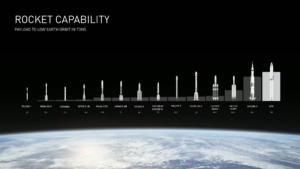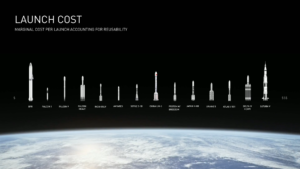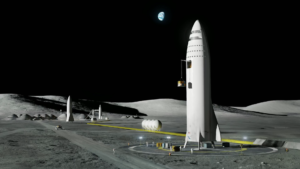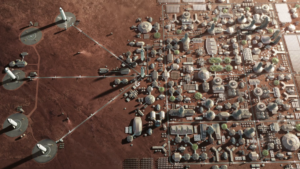A year ago I was on Christmas vacation at this time. My niece Pooja (she goes by Shannon outside the family) was visiting from California. I probably. It would have been a Tuesday because our North Houston Space Society Meeting had been on December 14, 2019. Trent Martin from Intuitive Machines had been our guest speaker. Intuitive Machines is one of the Commercial Lunar Payload Services (CLPS) provides and they are planning to put a probe on the moon in summer of 2021.
Doug Loverro had just been announced as the NASA Associate Administrator for Human Exploration and Operations (HEO). And he was tasked with getting people to the moon’s surface by the end of 2024. To this end, he wanted to keep himself, the people at NASA, the people in government, the public, and the contractors all focused on that date. He had a lapel pin that had the number of days till the end of 2024.

And in order to motivate the people at NASA he started showing a HEO Hero of the day which he would highlight on twitter. He announced this during a visit to NASA’s Michoud Assembly Facility in New Orleans, Louisiana, on Dec. 9 during Artemis Day.
Doug’s idea was swirling in my head. The enthusiasm of us returning to the moon was swirling in my head. And a couple of other thoughts. “I am at home all the time” (because I had been working from home the 2 years previously.) “Maybe I need a project to get me out talking to people in real life.” We just had a successful North Houston Space Society meeting.
And it struck me out of the blue. “How about I interview regular people, every day till the end of 2024?
I suggested this to the family and my niece Pooja (Shannon) Bhatia, and she thought it was a great idea. “You should tell NASA about it”, she said. But I do not think NASA would have much interest in it at that time. And they haven’t shown any interest in it over the first year. But NASA is not the target audience, but those people that will be born decades from now.
We recorded the first video on December 17, 2019.
The first video was free form, relaxed, and just a conversation with two people about NASA’s plans.
A few highlights and snippets from this conversation.
Jim Bridenstine is the first NASA administrator to be born after the Apollo moon landings.
Pooja, “I wonder if they will discuss anything new.”
Pooja, “What do you say about people who say it was fake?”
I walk through of the evidence of the people involved and the LRO photos, and the fact that the Russians could have easily detected our signals from the moon and triabulated location. The Russians would not have hesitated to call us out.
Pooja: “The Russians would have gotten us”
Pooja: “Putin doesn’t have anything.”
Nathan: “Well, Russia is the only people that can launch people to the International Space Station (ISS).”
Pooja: “Really? Wow”
Boeing would have their Starliner test later that week.
She is looking forward to the live streaming in 4K.
Pooja, “Hoping there are some new discoveries.”
And that is the question that would come up over the next year. “What do we hope to get out of it?”
But what about Doug’s project. Looking back, I see he did not actually kick off his HEO HErO until Jan. 6, 2020.


Doug only started including the number of days starting on his January 8, 2020 posting.

And he started giving out “I Made it Happen – HEO” pins with the number of days remaining. (Which maybe I should give out pins like that to people when I interview.)

And this got emphasized with future postings.

The pandemic affected the awards.

And was back on track on April 7, 2020:

But on May 21st we found out that Doug was leaving NASA, and that put an end to his project.

While it is sad to see that the HEO HErO of the day did not continue on. I’m committed to seeing this project through till the end of 2024.
And after 1 year, I was excited to be interviewed by the Houston Chronicle about this one year journey.






